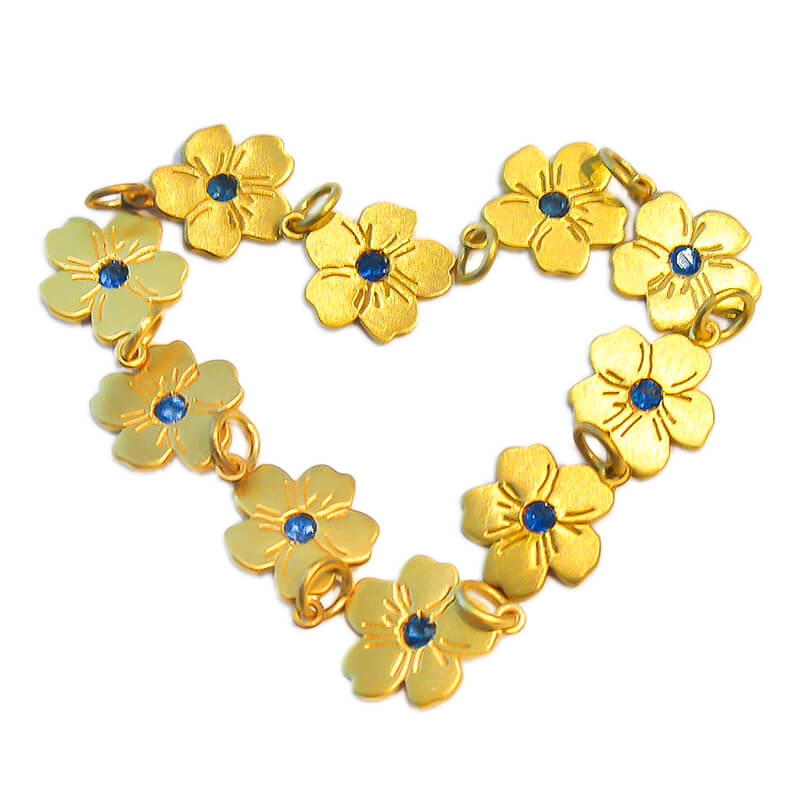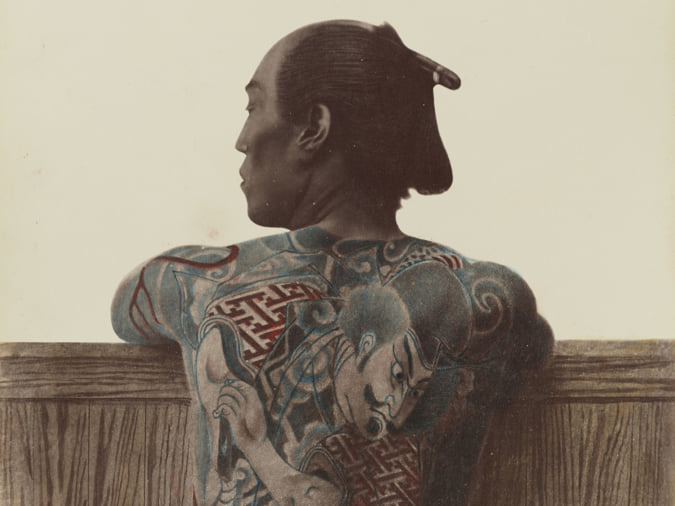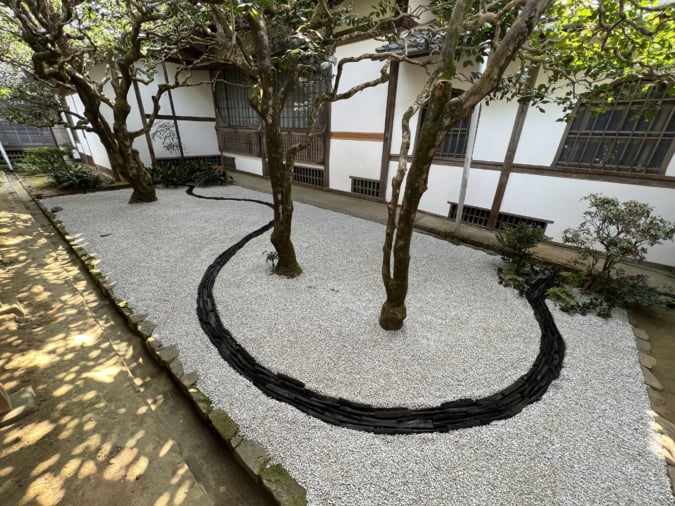A Forget-Me-Not Charm Supports Women in A Disaster Area

On March 11, 2011, an earthquake of unprecedented power struck eastern Japan. For women living in provisional housing of Minami-Sanriku-Cho in Iwate Prefecture, one of the devastated areas, the ama project has been a continuous means of support through handicrafts. In this activity, bracelets that have been hand-made by the women are sold in Japan and internationally.
The venture began in 2012 with the thought of ‘wanting the women of Minami-Sanriku, who are grieving over the loss of family and friends, to have hope for the future’. The project has succeeded through the collaboration of French cultural icons Jane Birkin, Charlotte Gainsbourg, and Lou Doillon. Because more than seven years have passed since the earthquake, with a slow fading of memory in many people, a new accessory is being presented. The work of Marie-Hélène de Taillac, this is a charm in 22-carat yellow gold and blue sapphire modeled on a forget-me-not, suggesting the message ‘lest that day be forgotten’. The charm is being sold at MTH Tokyo, with proceeds of the sale helping to support the activities of the ama project. Sparkling brightly with the message ‘may women from the disaster area stride bravely into the future, the forget-me-not charm is like a prayer of beauty and hope’.
TRENDING
-
Colour Photos of Yakuza Tattoos from the Meiji Period
19th-century photographs have captured the usually hidden tattoos that covered the bodies of the members of Japanese organised crime gangs.

-
A Rare Japanese Garden Hidden Within Honen-in Temple in Kyoto
Visible only twice a year, ‘Empty River’, designed by landscape architect Marc Peter Keane, evokes the carbon cycle.

-
The Tattoos that Marked the Criminals of the Edo Period
Traditional tattoos were strong signifiers; murderers had head tattoos, while theft might result in an arm tattoo.

-
The Nobu Empire, the Fruit of the Friendship between the Chef and Robert De Niro
The two men are partners in Nobu Hospitality, a luxury restaurant and hotel brand that has become a global success.

-
Hayao Miyazaki, the Man Who Adored Women
The renowned director places strong female characters at the heart of his work, characters who defy the clichés rife in animated films.





